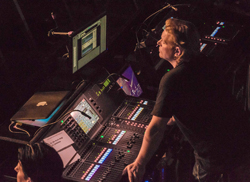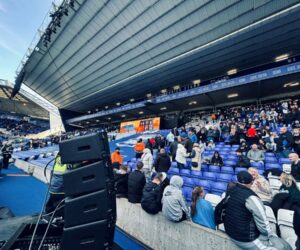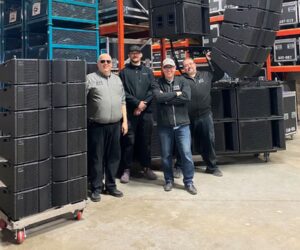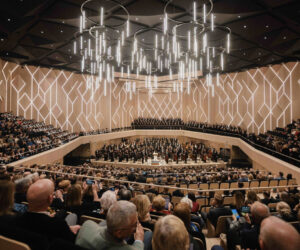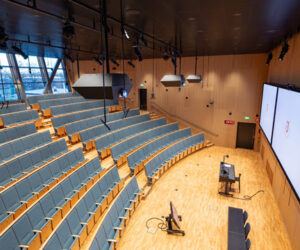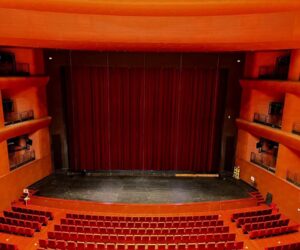On a recent tour with German rapper Casper, FOH engineer Oliver Voges (Faith No More, Deftones, Tangerine Dream, David Copperfield, Sarah Brightman) utilized a Waves MultiRack SoundGrid with SoundGrid Server One to run Waves plug-ins on a Yamaha CL5 digital console
“Over the last two years, in all my festival and indoor shows with Casper, Waves plug-ins have been an essential part of my live processing, Voges states. “Casper performs with a five-piece rock band. My main goal is to transfer the musical vision and energy from the studio recording to a live performance.
“In order to achieve this, live instruments and electronic sounds need to be glued together with a huge foundation of low end. This production is extremely challenging since it encompasses such diverse musical styles—hardcore, hip-hop, indie—creating an immense variety of sound.”
He continues: “My list of must-have Waves tools is as follows. For a solid sub range, the Waves MaxxBass plugin, tuned to 43 Hz, with the input routed via an AUX send, using it as a special FX sub for different sources, finalized by a L3-LL Multimaximizer in order to eliminate peaks and gain on the headroom. For drums, a combination of the very clear Yamaha CL5 input channel EQs to work on resonances, and different Waves EQ plugins for coloring.
“I love the V-EQ4 on kick drums and the SSL G-Equalizer on snare. For these channels I also use the Renaissance Axx compressor in order to get these pumping sounds I’m looking for. On the kit bus I do a NY-comp (parallel compression) with two API 2500s—one on the kit bus with nearly no compression, and one on the NY bus with huge gain reduction. This shapes the ‘in-your-face’ sound without having any phasing issues.”
Further, on bass he takes the direct instrument from the stage and then use my own Super Tube GTR-Amp, followed by a Renaissance Bass with the API 2500 comp on the insert. The second bass signal is a pure bass FX stomp box chain from the stage.
“With a basic character of the first channel, I’ll never lose its tonal definition, even if a lot of FX signal is applied,” Voges explaiins. “My vocal chain is the Waves C6 Multiband Compressor for de-essing and de-popping, followed by a CLA-76 Bluey compressor with short attack and release times.
“On the vocal bus, I use a SSL 4000 G-Master Buss Compressor in order to match main, FX, and backing vocals. Finally, I use the GEQ Graphic Equalizer ‘Modern’ in high-Q mode in order to work on the different room resonances from day to day. The GEQ’s output is summed up together with the band mix by a matrix that feeds the PA.
“Before the GEQ`s insert point, the vocal bus plus the band mix are joined in another matrix, which is used for a specific mix that I supply to outside broadcast vans. This gives me different vocal/band levels for PA and recording, plus my vocal room EQ does not affect the sound of the broadcast mix.”


